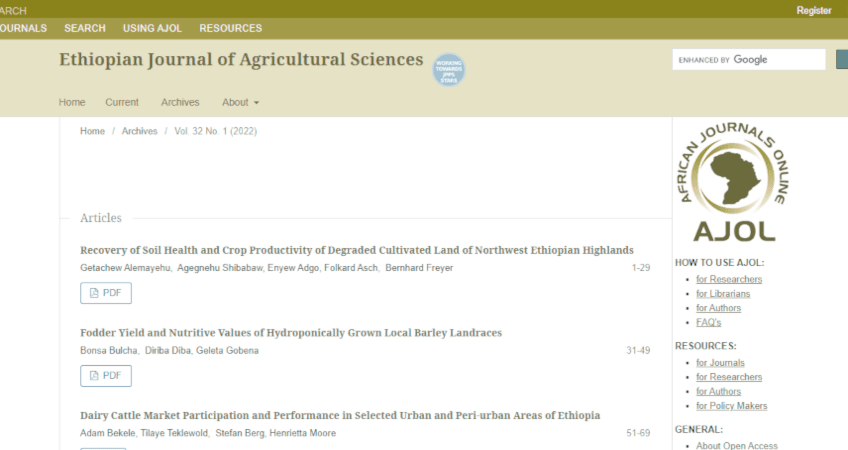Authors: Abate Bekele, Solomon Chanyalew, Tebkew Damte, Nigussu Husien, Worku Kebede, Kidist Tolosa, Yazachew Genet, Kebebew Assefa, Demeke Nigussie, Dominik Klauser and Zerihun Tadele; 2022
Key words: traditional varieties; neglected crops
Tef (Eragrostis tef) is extensively cultivated by over 6.5 million smallholder farmers in Ethiopia.
However, the productivity of the crop remains low mainly due to the limited use of improved technologies including seeds. In this study, three recently released and one old (as a check) tef varieties were evaluated on 254 lead farmers’ fields with the main aim of increasing farmers’ access to quality breed seeds.Each lead farmer was provided with breeder seeds of four improved tef varieties, namely Kora, Tesfa, Dagim, and Boset.The seed yield from the four tef varieties were comparable (Kora = 1.94, Tesfa = 2.31, Dagim =2.24 and Boset = 2.36 t ha-1). Given the input and output prices that prevail in the selected districts, the mean revenue was 65,355.90 Birr ha-1 while the mean production cost was 26,355.52 Birr ha-1. Among production costs, labor took for the lion’s share as it contributed to 58% of the total cost. In general, with a benefit-cost ratio of 1.5, our technology is highly profitable and attractive to farmers if newly released tef varieties are disseminated in the seed-business-oriented method.
Click on the following link to access the content: https://www.ajol.info/index.php/ejas/article/view/222317
